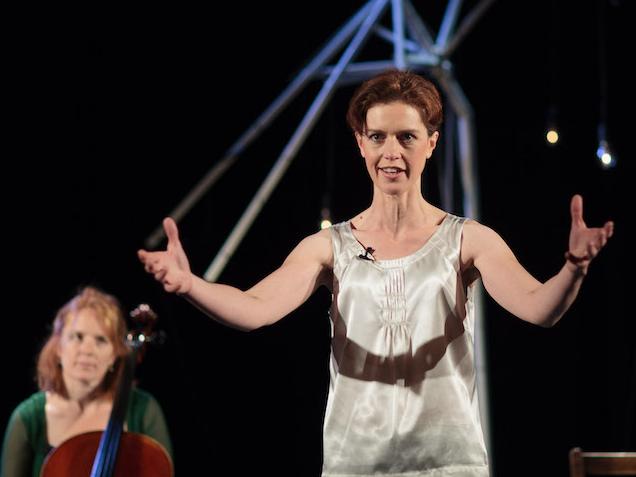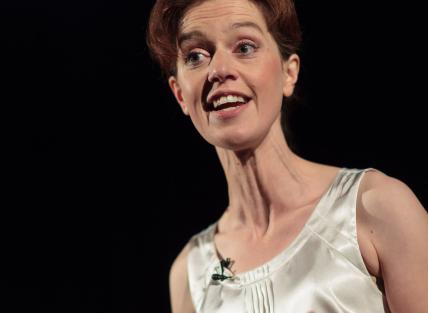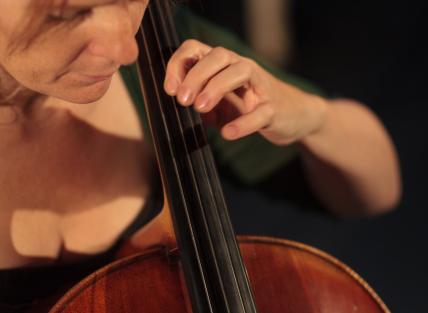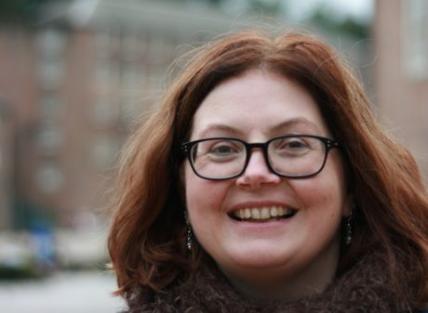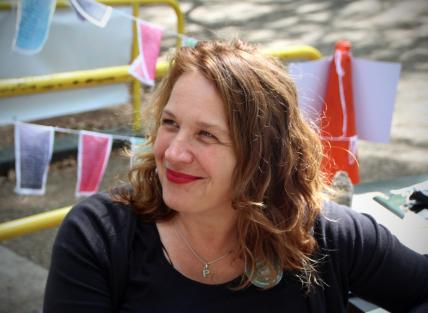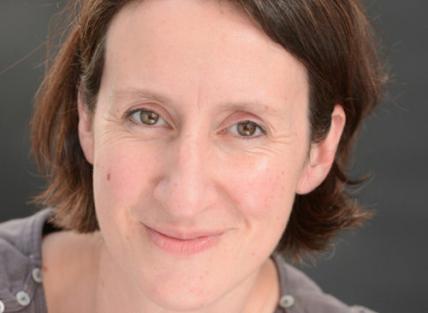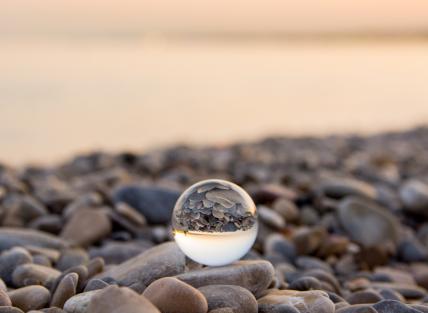The Kingdom of the Heart
What secrets does the Fiery Man reveal?
Through a hole in the ground and an opening of the mind, a gleaming, golden land is visible to those who know how to look. In that land is a king with legs of stone and a queen who has been enchanted by a serpent prince – a kingdom that has lost its way. Can they find a way to return to their true selves?
Join an adventurous fisherman, a talking horse, the woman from the apple orchard and the youngest son of twelve on an unforgettable journey to the kingdom of the heart.
Drawing freely from two Czech wondertales and the music of Bach, Britten and Barchet, The Kingdom of the Heart is an evening of imaginative and evocative storytelling and music about the places where we discover what is in us to be, and to do, and to feel.
For adults and audiences 12+
There is a CD recording of The Kingdom of the Heart available to buy, if you would like a copy (£10 + £3.00 p&p to the UK), please send us an email.
It was great, it was superb, it was magical, it was enthralling... I would see this company as soon as you can.The Pickled Egg, Ilkley
Katy Cawkwell is an assured, commanding presence... Sarah Llewellyn-Jones... thoughtfully utilising classical music to enhance the narrative.The Bristol Post
It is utterly absorbing. I really felt drawn into the story. I was there with them.Audience Feedback
More about the show
The Kingdom of the Heart is drawn from two Czech wondertales as well as the original voices of storyteller Katy Cawkwell and cellist Sarah Llewellyn-Jones. Elements of the story are familiar from many European wondertales, and also stories of the Arabian Nights, such as the Fiery Man escaping from a kettle, and Golden Fish who speak, as well as the landscapes and rhythms of the quest in the second half. The artists have neatly woven the stories together, with music and story.
The music is a mix of classical repertoire and improvisation based on Sarah’s responses to the story, showcasing the colours and textures of the cello. The choice of music is led by the imagery of the stories, comparatively modern music by Britten and Barchet in the first half, where themes are more folk-inspired, symbolic or sinister and Bach in the second, where the story moves through different formal kingdoms.
Artistic & Creative Team
FAQs
Katy – why do you tell traditional stories?
I love the way these tales create themselves afresh in the space between teller and audience. There are always new aspects to be found within them, however often they are retold. When I tell stories, I feel grounded in myself and in the moment and yet connected to a body of material that is rich in humanity and greater than any individual performer.
What are you looking for in a story that you decide to tell?
I find that the story usually chooses me rather than the other way round – it will jump off the page, calling to be told. Only later will I begin to understand why. In this case, I think the idea of a journey into a golden land which is whatever the characters need it to be, was very strong from the beginning. There are echoes for me of the doorways between worlds found throughout imaginative literature e.g. Philip Pullman’s His Dark Materials trilogy, C.S. Lewis’ Narnia, and I am beginning to find it something of an obsession as one of my previous shows, Rhiannon, was full of entrances between our and the Other world!
Sarah – has it been a very different experience for you working with a storyteller and on a traditional story?
I usually work with other musicians on a stage, sharing musical goals, and I am also generally preoccupied with playing music exactly how it is written on a page. Although this sounds simplistic, it can be incredibly complex and challenging. In Kingdom of the Heart the music is a little simpler, has far less structure, and of course I am pretty much in charge of what I play and how I play it – although entrances and climaxes have to be responsive to the way that Katy tells the story on the night. I am performing music that I love and following my own instincts about the way the cello can contribute to the unfolding drama, so in some ways it feels quite indulgent. Some of my favourite composers – Dvorak, for example – were inspired by traditional and folk music, so I don’t find the germination of the story so unfamiliar.
Do you have a particular affinity with any of the characters in this story?
SLJ: I wouldn’t say I have an affinity with them, though I like some better than others. The Boy is such an optimist, which I admire – I struggle to look on the bright side at the best of times… I like the Young King, he seems adventurous and persevering, and I imagine him to be quite handsome – all very heroic.
Has your perspective on the characters changed as you’ve developed the performance?
KC: The Queen is the character who has grown and developed most for me and I now feel I understand more about her motivations at every stage than I did at first. The more I worked with her becoming the horse, the more this substitute mother role seemed exactly right – what both she and the Boy needed most.
SLJ: I started to feel sorry for the Queen after a while; at first I thought she was just a regular ‘bad guy’. I used to feel a bit sad for the Old King; now I wonder if he was a weak man who didn’t give the Queen the attention she deserved. And so his legs were turned to stone!
Is the music always supporting the atmosphere of the story, or are there times when it questions it, or goes in another direction?
SLJ: I don’t think it questions it, though it predicts the action sometimes – the entrance of the Old Woman, the return of the White Princess. I suppose sometimes it fights for centre stage with Katy, particularly in the intense moments – I blame the instrument for that, of course.
Although there’s a fairly even balance of men and women in these stories, the main ‘quests’ seem led by the boys – does that present issues for you as female artists?
KC: Even if the hero of a wonder tale is a man, his journey is our journey whoever we happen to be. Whoever has felt fed up with the day job might identify with the fisherman, whoever feels restless for action might believe in the young king’s story and the Boy’s quest is for anyone who will or has already come of age and made that great transition from child into adult, from light innocence to rich experience. However, I wasn’t particularly comfortable with the presentation of the three princesses as simply objects of repulsion or desire, which is why I have tried to give them a little personality alongside their looks and I like the way the Princess of the White Island becomes an agent and a heroine in her own right.
SLJ: I agree that the journeys and the transformations of the characters aren’t too gender specific. Behind the scenes, we are a completely female cast and crew, so I can’t complain about gender bias.
Wonder tales can seem simple on first hearing them, but do you feel they are as deep, say, as myths you’ve worked with?
KC: I used to think wonder tales were somehow “neater” than myth, with all the ends tied together, but in these stories, the more I try and bring some resolution, the more untold stories I keep noticing – you wonder what happened to the Fiery Man, the Princess of the Red Island, the Eleven Elder Brothers… I am also still noticing new connections and echoes within or between the two stories and although the characters are in some ways archetypes, they become ever more rounded and complicated as I live with them in performance.
There are many strong colours in these tales – the golden kingdom, blue lake, the green, red and white islands – is that typical in wonder tale land?
KC: The vivid colours of the landscapes is one of the things I love most about this collection of wonder tales. There is another one I tell called Go to the Verge of Destruction and Bring Back Shmat-Razum where someone makes a tapestry map of the kingdom out of brilliant silks that captures the attention of all who see it; that is rather how I see these magical landscapes as I tell about them, glowing like jewels.
